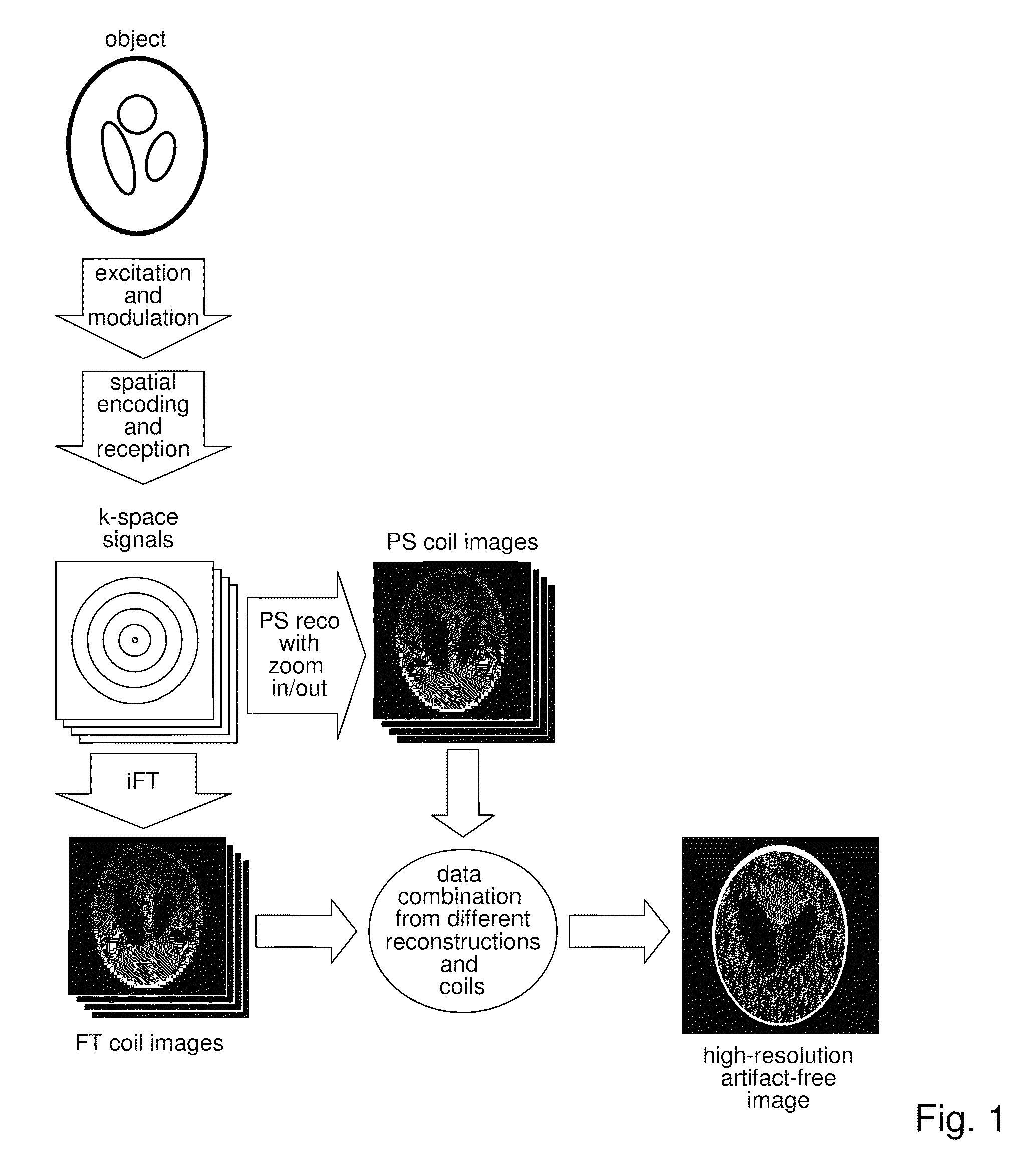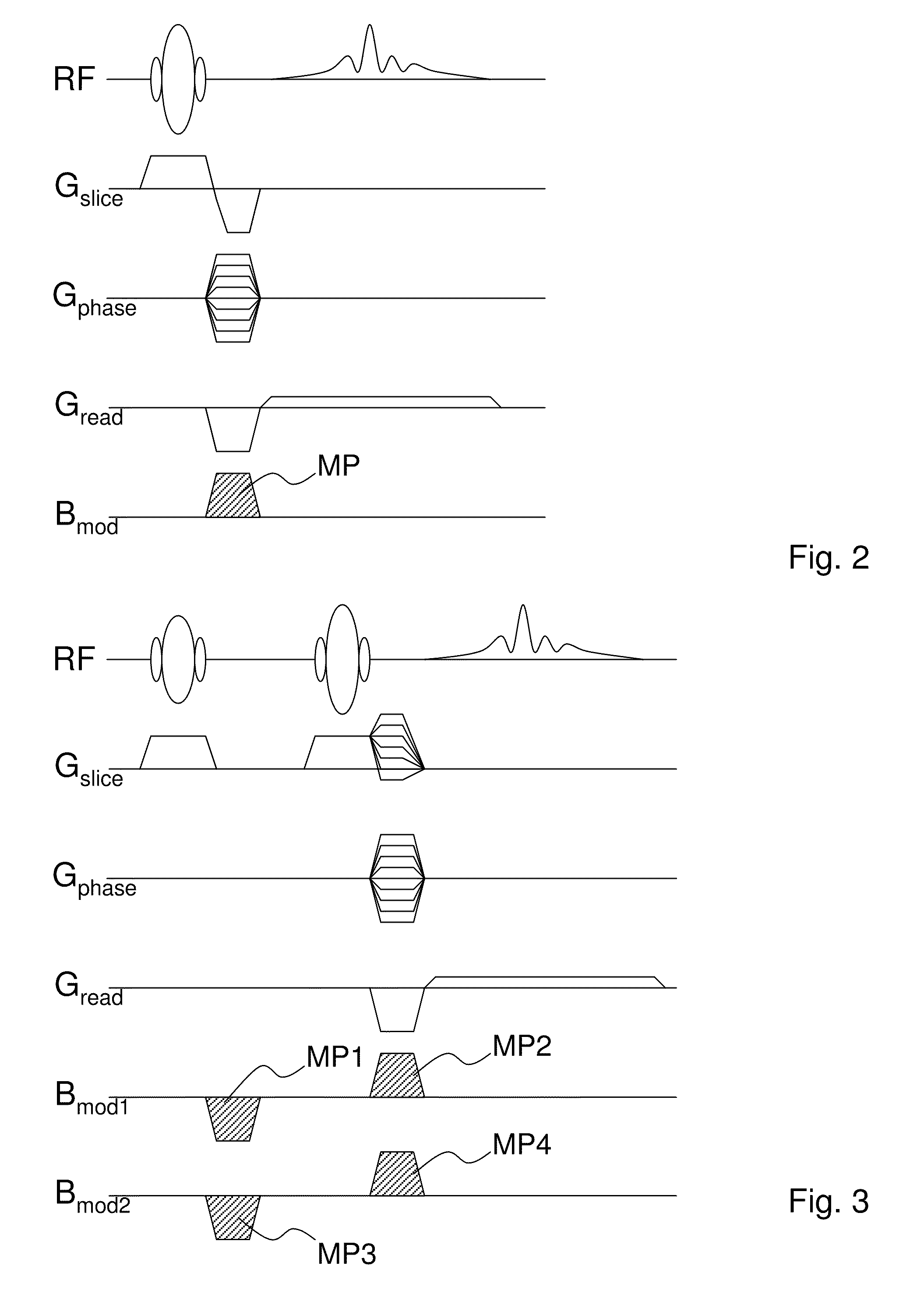Method for data acquisition acceleration in magnetic resonance imaging (MRI) with N-dimensional spatial encoding using two or more receiver coil arrays and non-linear phase distributions
a data acquisition and spatial encoding technology, applied in the field of mri methods and mri apparatuses, can solve the problems of incompatibility between separate pre-scan and integrated auto calibration methods with certain mri acquisition methods, inconsistent phase encoding dimensions, and inconsistent consistency, etc., to achieve the effect of increasing the degree of freedom
- Summary
- Abstract
- Description
- Claims
- Application Information
AI Technical Summary
Benefits of technology
Problems solved by technology
Method used
Image
Examples
Embodiment Construction
[0046]The present invention achieves an increased efficiency and thus time saving in spatial encoding of MR signals based on a combination of the non-linear spatial modulation of the phase of the signals with efficient signal reception using an RF receiver coil array. The scope of the present invention extends beyond the combined use of linear gradients for primary spatial encoding and quadratic phase modulation to achieve phase scrambling; indeed non-linear magnetic fields, as in PatLoc approach [12] or a combination of those fields with linear gradients may be used for primary spatial encoding in combination with a phase modulation function having a significantly non-linear representation in the distorted coordinate space defined by the primary encoding fields. E.g. phase modulation of the third or fourth order may be used in combination with a quadrupolar encoding fields. Additionally, more than a single phase modulation function can be applied to the different steps of the prima...
PUM
 Login to View More
Login to View More Abstract
Description
Claims
Application Information
 Login to View More
Login to View More - R&D
- Intellectual Property
- Life Sciences
- Materials
- Tech Scout
- Unparalleled Data Quality
- Higher Quality Content
- 60% Fewer Hallucinations
Browse by: Latest US Patents, China's latest patents, Technical Efficacy Thesaurus, Application Domain, Technology Topic, Popular Technical Reports.
© 2025 PatSnap. All rights reserved.Legal|Privacy policy|Modern Slavery Act Transparency Statement|Sitemap|About US| Contact US: help@patsnap.com



